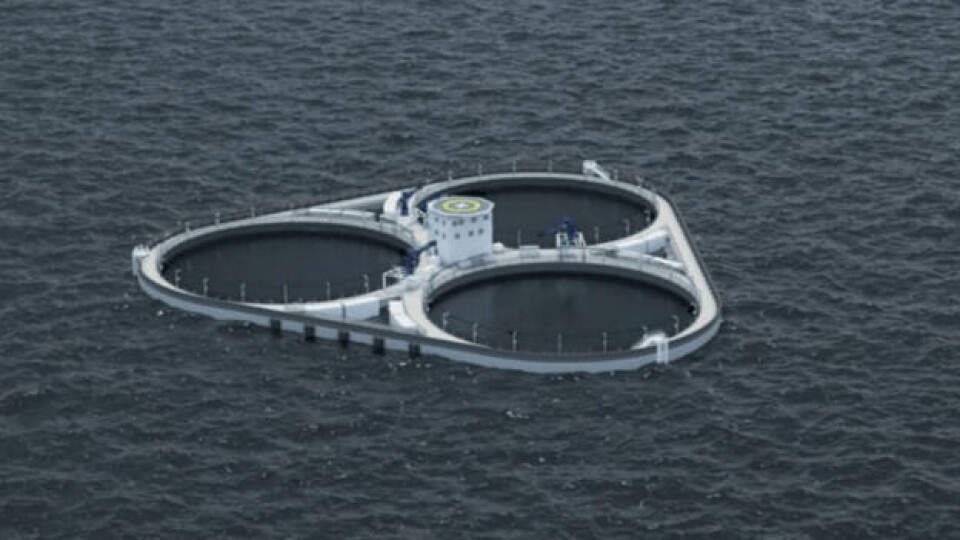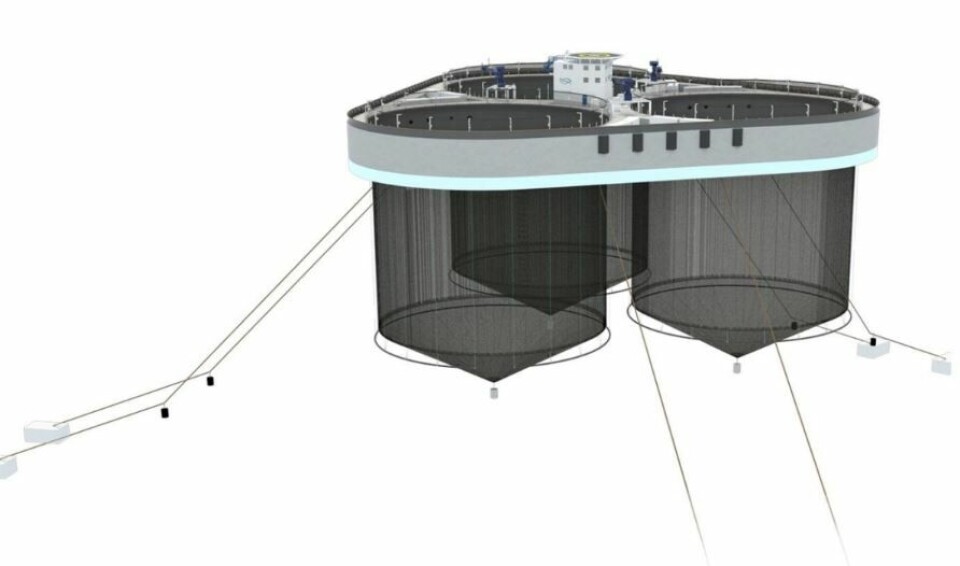
Second chance for concrete floating fish farm concept
A company behind plans for a floating salmon farm made of concrete has won an appeal against the refusal of development licences for the concept.
The ØyMerd, which translates as Island Cage, was initially rejected by Norway’s Fisheries Directorate because it believed the concept did not meet the essential criterion of significant innovation.
But the Ministry of Trade and Industry overruled the decision on appeal and has sent the application back to the directorate to be looked at again.

6,240 tonnes
“ØyMerd is a well-documented concept, which solves many tasks better than today’s commercial facilities. We believe the project involves significant innovation,” said fisheries minister Odd Emil Ingebrigsten in a press release.
Astafjord Ocean Farming applied for eight development licences for the ØyMerd concept. Each licence equates to 780 tonnes of biomass, meaning Astafjord hopes for permission to grow 6,240 tonnes of salmon.
How many licences it eventually gets will be up to the Directorate, which has rarely given applicants the biomass they said they needed to offset the cost of research and development into new ways of growing salmon.
Astafjord Ocean Farming is a joint enterprise between Troms fish farmers Gratanglaks and Kleiva Fiskefarm.

Ice-prevention system
The ØyMerd design is a triangular concrete platform 10 metres deep, where 7.5m is under water. It is designed for a significant wave height of 6m.
Each of the sides of the ØyMerd is 120m long, and in the centre of the platform is an operating building on three floors. Under the deck there will be storage space, technical equipment and feed silos. The platform has three separate and specially developed net pens.
In addition, ØyMerd will be equipped with an energy system that prevents ice formation on the deck and along the freeboard.
Safer for personnel and fish
Since the concrete structure is deep in the water, the ØyMerd will not move significantly on the waves, and the upper part of the net will be sheltered by the concrete.
“The construction ensures safety for personnel, fish and the environment,” Astafjord general manager Marius Arvesen told Fish Farming Expert’s Norwegian sister site, Kyst.no, three years ago.
“Our aquatic technicians can work under safe, stable conditions at the same time as the fish are shielded from waves and surface currents in the upper water masses. This also prevents lice infestation.”























































